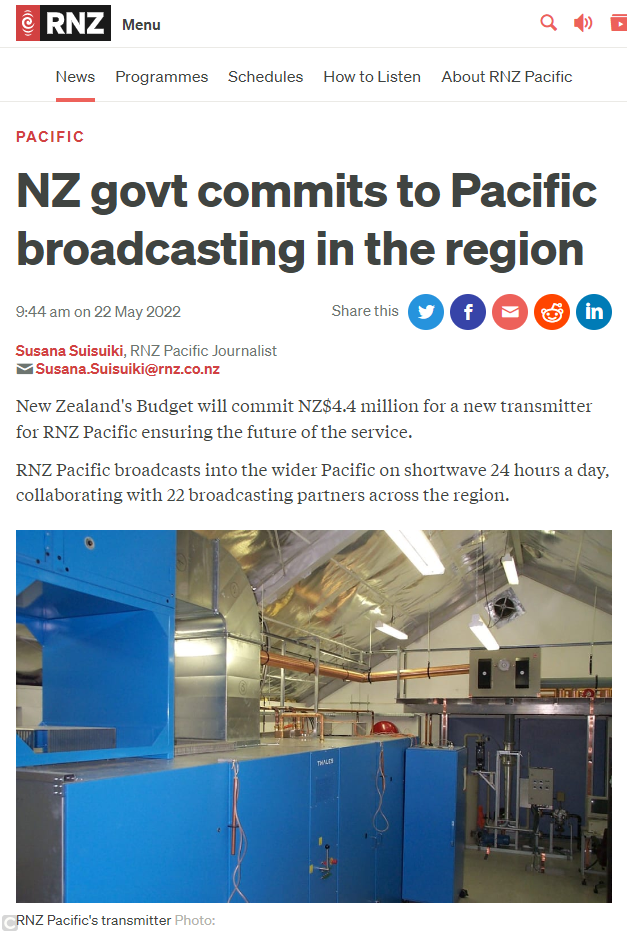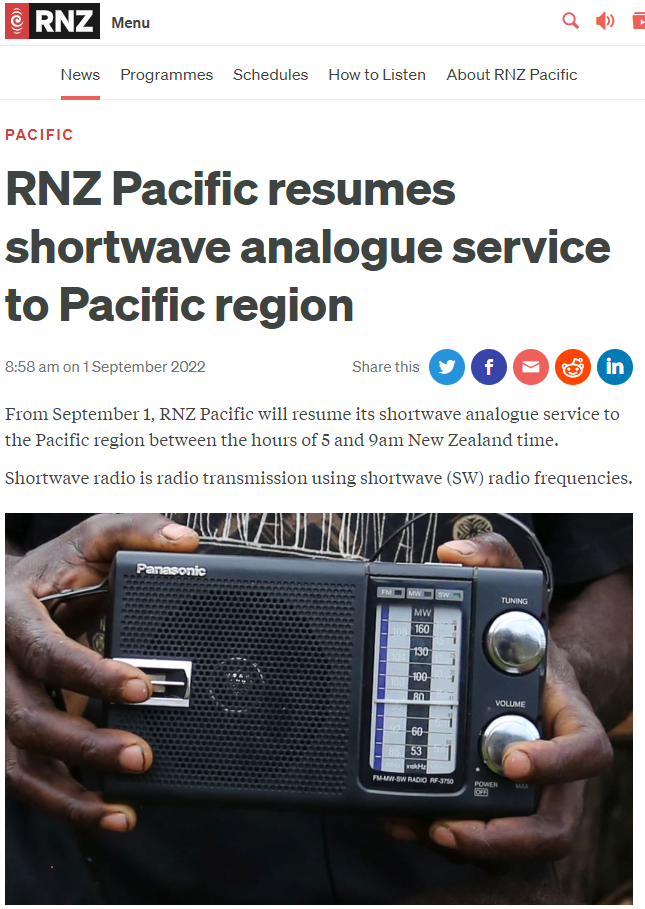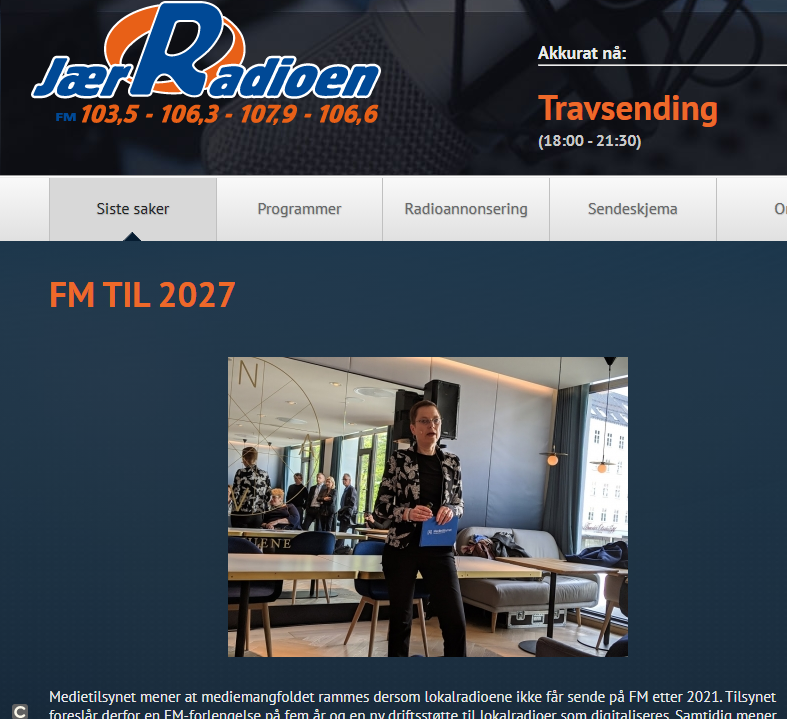
Source
As of September 2022, New Zealand’s public broadcaster (RNZ) has increased its shortwave broadcasting hours aimed at the Pacific region. The four morning hours, suspended in 2016, restarted thanks to new government funding, on three frequencies: at 5 a.m. local time on 7425 kHz, 6 a.m. on 9700 kHz, and 8 a.m. on 11725 kHz. The most listened news program is also repeated by the BBC Pacific Service. Shortwave broadcasting, largely abandoned since the 1990s at the end of the Cold War, still remains the most effective means of covering very large areas. As in the Pacific Ocean archipelagos, where many communities still use the old analogue radios with the SW (Short Waves) band to inform themselves.
It also broadcasts digitally

Source
In the middle hours of the day, however, the station broadcasts with the DRM standard: a digital transmission system that eliminates all the typical hissing due to atmospheric and electromagnetic interference. The audio is stereo, but it is out of reach of the old analogue radios. In order to receive the DRM you have to buy a receiver that is set up to decode the digital signal, which costs between 50 and 100 euros. Alternatively, the signal is broadcast by satellite from Intelsat 19 on C-band: coverage extends from Singapore eastward to the Cook Islands, including Fiji, Tonga, Niue and Samoa. (Written by Fabrizio Carnevalini)



